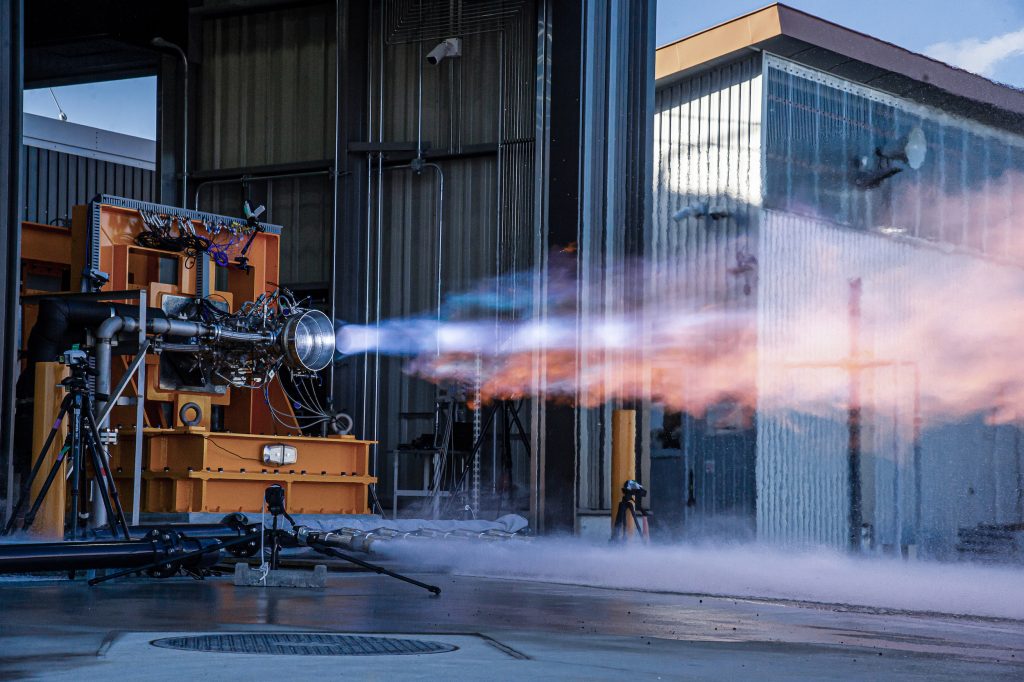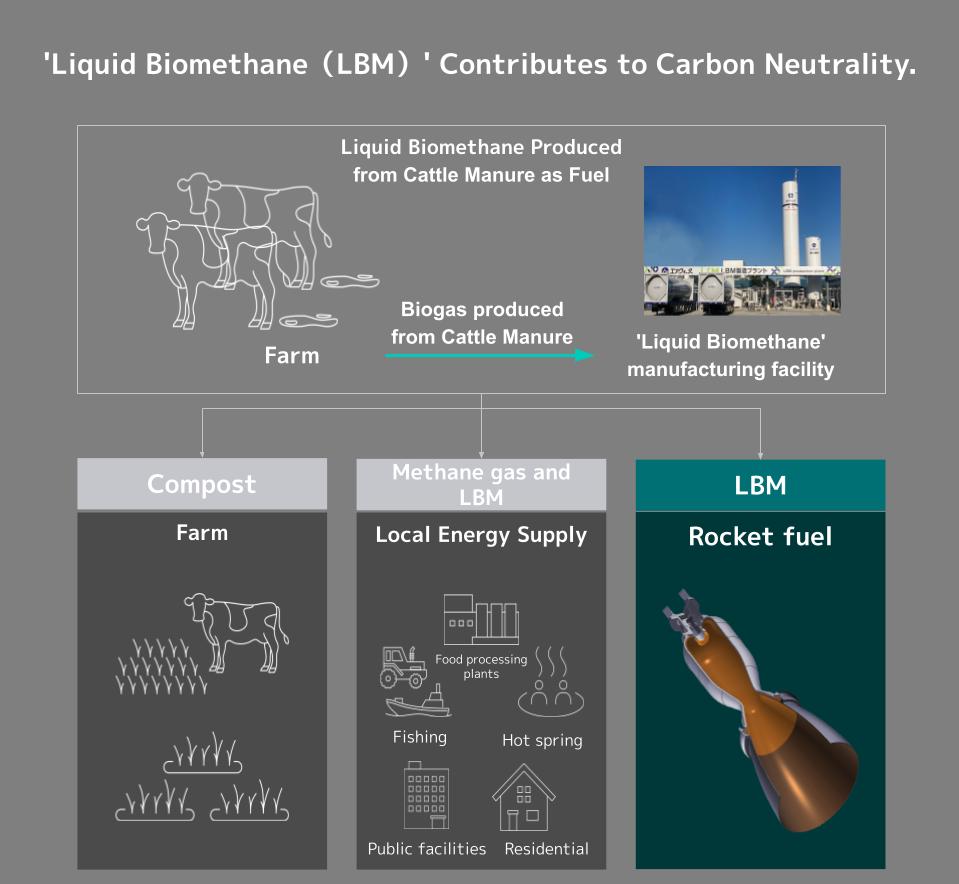
Hokkaido, Japan, 07 Dec 2023 – Taiki Town Office and SPACE COTAN Co., Ltd., which develop and operate “Hokkaido Spaceport” ( hereinafter referred to as “HOSPO”), a commercial spaceport open to the private sector in Asia, announce that Interstellar Technologies Inc. (hereinafter referred to as “IST”)has reached a new milestone with the completion of a static fire test for its small satellite launch vehicle, ZERO, powered by Liquid Biomethane (LBM).IST is a comprehensive space infrastructure company committed to tackling global challenges through space transportation and utilization based in Taiki.
The test was held at HOSPO’s suborbital launch site ‘Launch Complex-0 (LC-0)’ in Taiki. IST uses the LC-0 as its dedicated launch site. In this test, LBM produced from cattle manure from a farm in Taiki was utilized as rocket fuel, and the test showcased the potential of LBM as a sustainable rocket fuel.
This milestone follows the success of the European Space Agency’s (ESA) development of a rocket engine using LBM, and represents a world-first for a private rocket company.
《Test Summary》
Test title: ZERO engine, ‘COSMOS’, Static Fire Test of Combustion Chamber
Objective: Validation of main combustion chamber and nozzle skirt assembly performance and durability
Propellant: Liquid oxygen, Liquid Biomethane (LBM)
Timeframe: 28th,NOV. 2023, to 31st. Jan. 2024 (scheduled)
Place : Hokkaido Spaceport “Launch Complex-0(LC-0)”
Burning time: 10 sec.
More information about the test: PRESS RELEASE
Sustainable space development and solving local problems with liquid biomethane locally produced from cattle manure in Taiki.
Dairy farming is a core industry in Taiki, with approximately 30,000 cows raised in the town. As a result, odor, water pollution, and cattle manure treatment have long been a problem for agriculture and the local community.
Air Water Inc. and Air Water Hokkaido Inc. have been at the forefront of establishing a regional circular supply chain, centered around the conversion of biogas derived from cattle manure in the Hokkaido Tokachi area into LBM – a sustainable alternative to liquid natural gas (LNG) , and an innovative way to solve these problems.
In October 2022, the successful launch of the first domestic LBM manufacturing facility in Tokachi area marked a pivotal milestone in advancing fuel supply demonstrations to food processing plants, LNG trucks, and marine vessels.
The LBM used in the upcoming test is produced by separating and refining methane, the primary component of biogas, and subsequently liquefying it at approximately -160°C. It achieves the same high purity (99% or higher) as conventional rocket fuels used in the past. IST, impressed by the performance and procurement excellence of LBM, has decided to adopt Air Water’s LBM as the fuel for the ‘ZERO’ rocket.
Liquid methane has emerged as a superior fuel choice for rocket launches due to its comprehensive advantages in price, fuel performance, ease of handling, availability, and environmental impact, making it the preferred choice for rocket companies worldwide, including SpaceX’s Starship. In Japan, in addition to IST, private companies such as SPACE WALKER Inc. and Innovative Space Carrier Inc., which hope to launch at HOSPO, and JAXA’s next-generation rocket have adopted liquefied methane as fuel.
In 2021, Taiki Town declared itself a “Zero Carbon City” with the goal achieving virtually zero carbon dioxide emissions by 2050, and promotes sustainable urban development in consideration of the global environment. Therefore, HOSPO is also promoting the use of LBM as a green and sustainable energy and striving for sustainable space development and contribution to carbon neutrality.

Japanese government supports private rocket development. Increased need for spaceport for private use.
The global space market is expected to grow to a huge market of more than 1.1 trillion USD by 2040, nearly three times the current market size, due to the expansion of the private space sector, the growing importance of the security sector, and the proliferation of small satellite services using satellite constellations. The demand for small satellites is also increasing the demand for space transportation services to carry satellites into space, but space transportation services are in short supply relative to demand, creating a bottleneck in the industry.
In Japan, based on the Basic Plan on Space Policy (*1) approved by the Cabinet in June 2023, it was clearly stated that access to space should be secured without dependence on other countries and that independent space activities should be realized. As a specific policy, the Ministry of Education, Culture, Sports, Science and Technology (MEXT) launched the “Small and Medium Business Innovation Promotion Program (SBIR Phase 3) “(*2) , a program to promote the practical application of advanced technologies owned by start-up companies. This program targets deep-tech R&D-oriented companies in fields such as space (space transportation/space debris), nuclear fusion, and disaster resilience. The allocated funding for the space transportation sector is JPY 35 billion for the SBIR program, with a maximum grant of JPY 14 billion per company. Japanese government support for private sector rocket development and commercialization has begun in earnest.
IST, SPACE WALKER Inc., and Innovative Space Carrier Inc. have been selected under the SBIR Phase 3 program. All three companies plan to launch at HOSPO launch site. This further increases the need for launch and testing sites available to the private sector. HOSPO, as a commercial spaceport for private use, will provide a rocket development environment for various rocket operators by taking advantage of its strengths such as its history and achievements in space city development for about 40 years, its geographical advantages of being open to the east and south, and its vast land area.
*1: Source :Cabinet Office, Government of Japan , Website
https://www8.cao.go.jp/space/plan/keikaku.html
*2: Source: Ministry of Education, Culture, Sports, Science and Technology(MEXT)Website
https://www.mext.go.jp/mext_02308.html

